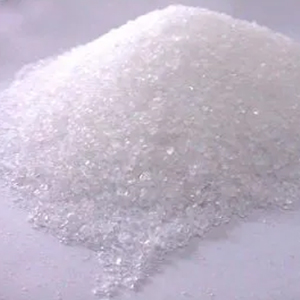
DEFINITION
Trilithium 2-hydroxypropane-1,2,3-tricarboxylate tetrahydrate.
Content: 98.0 per cent to 102.0 per cent (anhydrous substance).
CHARACTERS
Appearance: White or almost white, fine crystalline powder.
Solubility: Freely soluble in water, slightly soluble in ethanol (96 per cent).
IDENTIFICATION
A. When moistened with hydrochloric acid, it gives a red colour to a non-luminous flame.
B. Dilute 3 ml of solution S (see Tests) to 10 ml with water. Add 3 ml of potassium ferriperiodate solution. A white or yellowish-white precipitate is formed.
C. To 1 ml of solution S add 4 ml of water. The solution gives the reaction of citrates.
TESTS
Solution S: Dissolve 10.0 g in carbon dioxide-free water prepared from distilled water and dilute to 100 ml with the same solvent.
Appearance of solution: Solution S is clear and colourless.
Acidity or alkalinity: To 10 ml of solution S add 0.1 ml of PhPh solution. Not more than 0.2 ml of 0.1 M hydrochloric acid or 0.1 M sodium hydroxide is required to change the colour of the indicator.
Readily carbonisable substances: To 0.20 g of the powdered substance to be examined add 10 ml of sulphuric acid and heat in a water-bath at 90 ± 1C for 60 min. Cool rapidly. The solution is not more intensely coloured than reference.
Chlorides: Maximum 100 ppm.
Oxalates: Maximum 300 ppm, calculated as anhydrous oxalate ion.
Sulphates: Maximum 500 ppm.
Heavy metals: Maximum 10 ppm.
Water: 24.0 per cent to 27.0 per cent, determined on 0.100 g.